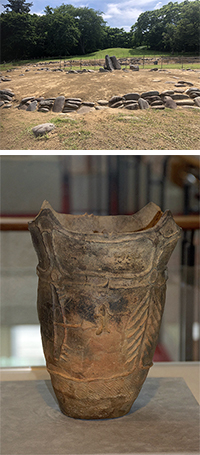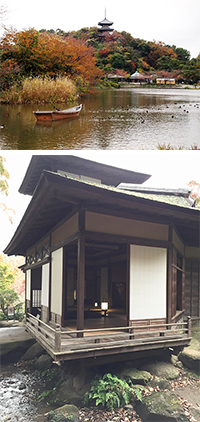 |
 |
 |
 |
 |
Mind Travel to Jomon Times: A Trio of Archaeological Sites in Aomori |
 |
| Susan Rogers Chikuba |
 |
The northernmost prefecture on Japan's main island of Honshu, Aomori has some 3,000 Jomon-period archaeological sites -- even its capital city lays claim to a whopping 400. The prefecture is home to half of the 17 sites in northern Japan that are now under review for inscription on the UNESCO World Heritage list. In fall 2020 I visited three of these and their affiliated museums, as well as the excellent Aomori Prefectural Museum. There is a staggering body of material still coming from these excavations, which curators and other scholars continue to study and debate for insights into the Jomon: a prehistoric, pre-agricultural society that subsisted across Japan's islands for more than 12 millennia, and whose people created some striking art along the way. more...
|
|

 |
 |
 |
 |
His Own Private Minka-en: Sankei Hara's Fabulous Garden |
 |
| Alan Gleason |
 |
Japan boasts plenty of open-air architectural museums, those mini-villages of historical buildings moved from elsewhere. Many go by the moniker of minka-en, literally "folk-house park," and feature authentic thatched-roof farmhouses, rustic tea huts, and hoary temples anywhere from a few decades to over a millennium old. Cities all over Japan have their own locally-sourced minka-en. Rarely, however, has such an assemblage of traditional architecture been the work of one man, and this is what makes Sankeien, a park-sized landscape garden in Yokohama, such a remarkable place. more... |
|
 |
|
|
 |
|